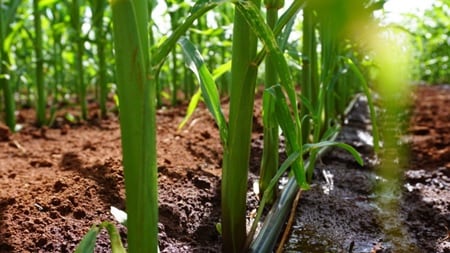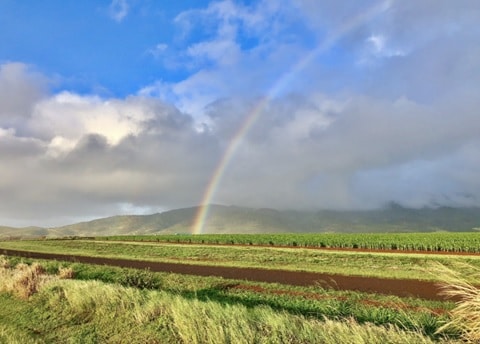Sustainability

Bayer Hawaii understands the importance of preserving and protecting our island home and we are dedicated to being a good steward of our land. That’s why Bayer Hawaii is committed to conserving natural resources, operating our farms and facilities safely, and minimizing the environmental impact of our farming practices.
New Standards in Sustainability
We want to set new standards in sustainability — both here in Hawaii and around the world — by delivering world-class innovation and driving digital transformation in agriculture to better protect our land and resources. We take our responsibilities as a leader in innovation seriously, and our goal is to significantly cut the ecological footprint of our agricultural portfolio by 30% by 2030.
Here are some of the ways we care for our farmlands and natural resources in Hawaii:

Drip irrigation delivers water directly to the plant root zone and reduces the amount of fertilizer needed to produce a crop. We’ve found that this method saves more than 11 million gallons of water per year and uses 60% less nitrogen.

We consult with the USDA’s Natural Resources Conservation Service about our soil and water conservation efforts, and all our farms have approved conservation plans in place to preserve water and soil.

Our Piilani farm on Maui uses recycled R1 water from the municipal waste system for all irrigation and non-potable water needs. R1 water is defined as “tertiary treated recycled water that can be used without restriction.” R1 water is an eco-friendlier alternative to using thousands of gallons of freshwater daily.

Our farming practices help ensure the soil we farm remains healthy and productive. Some of the things we do to help prevent soil loss include cross slope grass plantings, diversion terraces, cover crops, grass barrier strips, windbreaks, spraying water on dirt roads, laying gravel on high traffic roads and halting all tillage activities under excessive wind conditions.

We are working to incorporate strip-tilling, a soil management practice that reduces the number of passes a tractor needs to make across a field in order to prepare an area for planting.

In an effort to protect honey bees and other pollinators, Bayer’s pesticide applicators have been trained to observe and help protect bee populations at all of our farms in Hawaii and take into consideration the behavior and habitats of bee populations in our daily operations.
Integrated Pest Management (IPM)
All farmers need to be able to manage pests. Insects, weeds and diseases can have a devastating effect on crop yield and quality, and farmers need to have a variety of tools available to help control them.
Like other farmers, Bayer uses Integrated Pest Management (IPM) practices – a system of robust evaluations, careful decision-making and methodical controls – to determine how best to limit pest damage safely, sensibly and economically. Many of these practices are commonly used on organic as well as conventional farms.

An IPM system starts with scouting and considers multiple approaches to protecting a crop:
- Physical controls such as barriers or traps can eliminate pests directly.
- Biological controls leverage a pest’s natural enemies (“good bugs” like ladybugs eating “bad bugs” like aphids).
- Chemical controls use modern pesticides in a deliberate and targeted manner.
All of these approaches are used by farmers and land managers to effectively manage pests over the long-term.